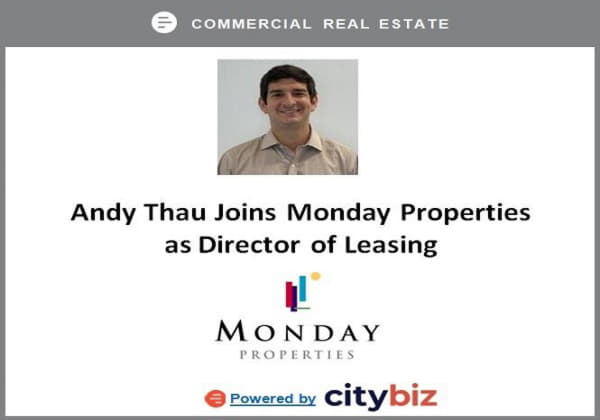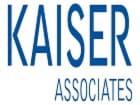NEW YORK--(BUSINESS WIRE)--After an active period during the third quarter of 2020, with many companies once again touring available office space, tenant demand dropped sharply in most markets during the fourth quarter, according to the VTS Office Demand Index (VODI). The VODI tracks tenant tours, both in-person and virtually, of office properties across the nation, and is the only commercial real estate index to track tenant demand.
Nationally, office leasing demand was down 61 percent from December 2019. Dynamics over the year paralleled national COVID-19 cases, with a precipitous drop at the beginning of the pandemic, a modest recovery over the summer, and another dropoff at the end of the year. By September, demand was at a six-month high at a VODI of 43 index points, but dropped 26 percent in the fourth quarter to 32. By comparison, the national VODI in February 2020 (pre-COVID-19) was 94 and in December 2019 it was 82.
The fourth quarter typically experiences a dropoff in demand due to seasonality. While the fourth quarter of 2020’s decline was not as steep as in previous and more active years, relative to the much lower levels of demand during this crisis, the decline of 26 percent was more severe than typical. Only two markets, Los Angeles and San Francisco, bucked seasonality, netting positive growth between the months of October and December.
VTS announced that the VODI would be made available moving forward on a monthly basis. The VODI is the earliest available indicator of forthcoming office leases and tenant sentiment, locally and nationally1, and represents up to 99% of new demand for office space in seven major markets, including New York, Washington, D.C., Los Angeles, Chicago, Boston, Seattle and San Francisco.
Two Markets Experience Growth in the Fourth QuarterBoth Los Angeles and San Francisco sustained or improved their recoveries throughout the last quarter of the year, although the overall health of the two markets differs dramatically. Los Angeles started out with a VODI of 95 in February and lost 88 percent of demand by May. It has since gained back 61 percent of what was lost to end the year only 35 percent from pre-crisis levels. By comparison, San Francisco started out with a much lower VODI of 56, and within two months lost 95 percent of the demand for office space. It has since regained 30 percent of what was lost since February.
“Despite a dramatic increase in COVID-19 cases and restrictions in California, and poor unemployment numbers, both Los Angeles and San Francisco saw growth in the fourth quarter but for entirely different reasons,” said VTS CEO and co-founder Nick Romito. “In Los Angeles, the market is largely being propped up by the creative industry, which is significant because once office employment does come back, we could see a boom in the area. In San Francisco, the only way to go was up. COVID-19 combined with the downward trend in demand we’ve been seeing since April 2019 brought demand to a near-halt, but we’ve begun to see prospective tenants trickle back, signaling they could be past their bottom.”
| National | BOS | CHI | L.A. | N.Y.C. | SEA | S.F. | D.C. | |
| December 2019 VODI | 82 | 85 | 49 | 72 | 105 | 83 | 75 | 92 |
| February 2020 VODI (pre-crisis) | 94 | 103 | 55 | 95 | 128 | 86 | 56 | 110 |
| October 2020 VODI | 42 | 47 | 26 | 68 | 43 | 34 | 13 | 66 |
| November 2020 VODI | 34 | 44 | 17 | 61 | 33 | 22 | 15 | 48 |
| December 2020 VODI (current) | 32 | 40 | 15 | 62 | 33 | 17 | 20 | 42 |
| VODI Change from February 2020 to Trough (%) | -85.1% | -74.8% | -83.6% | -88.4% | -94.5% | -88.4% | -94.6% | -72.7% |
| VODI Change from February 2020 to current (Dec.) (%) | -66 | -61.2% | -72.7% | -34.7% | -74.2% | -80.2% | -64.3% | -61.8% |
| Quarter-to-Quarter VODI Change | -11 | -2 | -17 | 5 | -16 | -20 | 5 | -22 |
| Quarter to Quarter VODI Change (%) | -25.6% | -4.8% | -53.1% | 8.8% | -32.7% | -54.1% | 33.3% | -34.4% |
| Year-to-Year VODI Change | -50 | -45 | -34 | -10 | -72 | -66 | -55 | -50 |
| Year-to-Year VODI Change (%) | -61% | -52.9% | -69.4% | -13.9% | -68.6% | -79.5% | -73.3% | -54.4% |
Volatility in Once Stable or Recovering MarketsIn Seattle and Washington D.C. — two markets that had shown the strongest recovery over the summer — demand dropped sharply in the fourth quarter.
Once a market noted for its early recovery, Seattle saw a steep decline in demand in Q4, giving back any recovery it had achieved over the summer. The market’s VODI was 16 in June; 37 in September; and 17 in December. Although Seattle stands out as a market where office-using employment levels are nearly back to pre-crisis levels, demand for office space continues to lag.
Similarly, Washington, D.C., which had historically avoided dramatic volatility, saw demand drop sharply to close out the year. Washington, D.C. did not avoid early pandemic drops in demand, but it recovered very quickly and experienced increasing demand over the summer. However, most of its gains were reversed in November and December with the VODI falling 18 and 6 points, respectively.
“Although office-using employment has recovered in Seattle, demand for office space to host all those employees lags. This may suggest a significant embrace of more remote work in Seattle over the long-term and at the very least, demonstrates the ability and willingness of tenants, particularly in tech, to hold off on their search for office space until the pandemic's end is in sight,” said VTS Chief Strategy Officer and co-founder, Ryan Masiello. “We believe the drop in demand in Washington, D.C. is due to the rocky transition between administrations affecting space requirements tied to government contracts. But with the Democrats holding the presidency, the House, and the Senate, the potential legislation this term – and those needed to put it into action – should stimulate Washington, D.C. office demand in the coming year.”
New York City Short-term Stability and ToursLike most other markets, New York City experienced a decline in demand after the summer, but late Q4 was relatively stable with no change from November to December, a period that historically sees a drop in demand of 10 index points or more. However, despite the near-term stability, there is still a long way to go to a full recovery with demand still 74 percent down from pre-COVID-19 levels.
After jumping up to 83 percent during the second quarter, the share of tours in Class A or Trophy spaces versus Class B and C spaces in New York City has since begun to erode back to its baseline of 57 percent in Q1. Still, tours of Class A and Trophy spaces are taking up more than their typical share in the market at 69 percent in the last quarter of 2020, signaling the financial strength of tenants still active in the market has contributed to a shift in demand.
1The VTS Office Demand Index is a smoothed but not seasonally adjusted view of the total square feet toured in a given month by tenants with active requirements for office space. To control for new construction and VTS’ own growth into a market leader, this total square footage is normalized against the total property square feet tracked in VTS’ expansive network of leasing, marketing, and asset management software. To enhance comparability across regions, VODI is reported as an indexed value from the base month, January 2018.
About VTS
VTS is commercial real estate’s leading leasing, marketing and asset management platform where the industry comes to make deals happen and real-time data comes to life. The VTS Platform captures the largest first-party data source in the industry, which delivers real-time insights that fuel faster, more informed decision making and connections throughout the deal and asset lifecycle. VTS Data, the industry’s only forward-looking market dataset, and VTS Market and Marketplace, the industry’s first integrated online marketing solution, give landlords, brokers, and tenants unparalleled visibility into real-time market information and the direct connectivity to execute deals with greater speed and intelligence at every point in the planning, marketing, leasing, and asset management cycle.
More than 60% of Class A office space in the US and 12B square feet of office, retail, and industrial real estate globally is managed on the VTS platform. VTS’ user base includes over 45,000 CRE professionals including respected industry leaders like Blackstone, Brookfield Properties, LaSalle Investment Management, Hines, Boston Properties, Oxford Properties, JLL, and CBRE. To learn more about VTS, and to see our open roles, visit www.vts.com.















